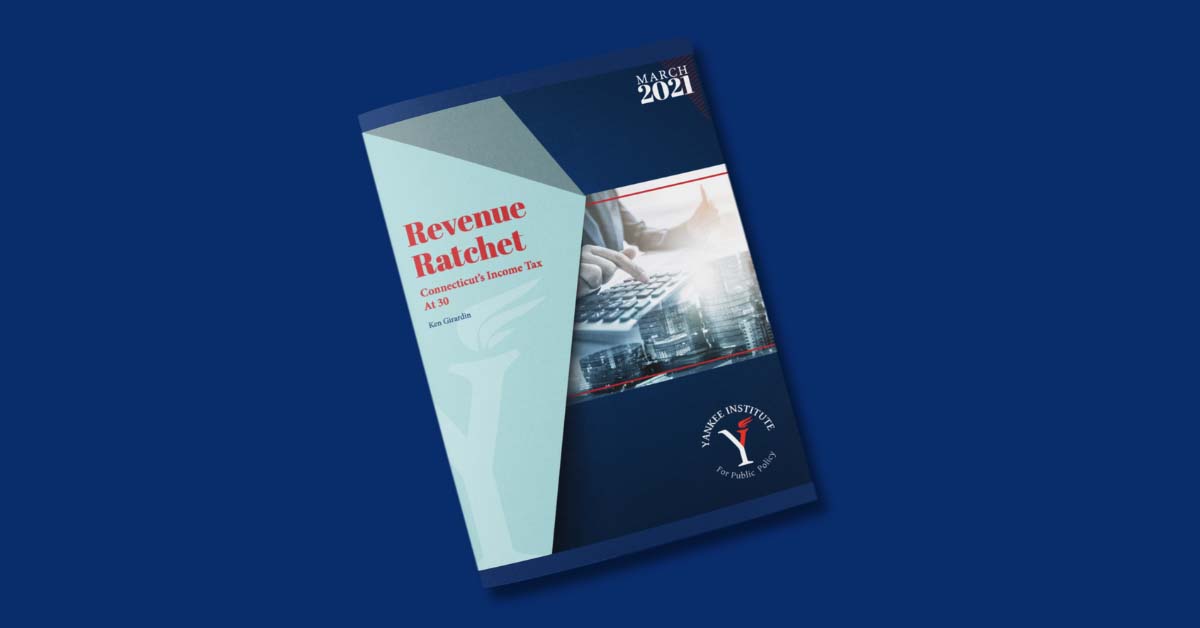EXECUTIVE SUMMARY
By Ken Girardin
Three decades have passed since the historic budget crisis that culminated in the creation of Connecticut’s personal income tax.
The tax was enacted out of desperation: a roaring private sector buoyed a multi-year explosion in state spending, which left state government deep in the red as the economy slowed and tax revenues sank.
Supporters eyed the income tax as a way to make the state’s tax system less regressive—and to expand the size and scope of state government. And what began in 1991 under Governor Lowell Weicker as a flat 4.5 percent tax on personal income has morphed into a seven-bracket tax with a top rate just under 7 percent. This, the 30th anniversary of the tax, is an appropriate time to re-examine both the rationale behind its adoption and to measure how the tax has performed as a revenue source.
TO READ REPORT:
- Click beneath report to expand screen for full view.
- Click on side arrows to flip the pages.
- Click on “+” or “-” to zoom in and out on pages.
- Click on bottom navigation bar to view the Table of Contents.
A central argument for the income tax—that unlike a sales tax it would be deductible from federal income taxes—was partially negated in 2017 when Congress restricted the deductibility of state and local tax payments (SALT).
Enacting the income tax allowed other taxes, such as the sales tax and corporate income tax, to be reduced immediately. It lowered the tax rates on capital gains, interest, and dividends.
Those reductions, however, have been partially reversed.
But the primary argument for the state income tax—that it would be a more stable alternative to the state sales tax—has not panned out.
Instead, the state has faced multiple sudden drops in tax revenues—and responded by hiking income tax rates further, making the state increasingly dependent on volatile investment income. This cycle has had a ratcheting effect on state tax revenues—and left Connecticut more reliant on income tax revenues than all but two states.
Key decisions in subsequent years—after Weicker left office—allowed the tax to assume its current form, as the tax was first split into multiple brackets and the top rate was increased on a permanent basis. Those changes have exacerbated the volatility by making the state more reliant on taxing investment income, such as capital gains, as opposed to salaries and wages.
The data also show:
- The share of individuals paying half of state income taxes has shrunk from about 12 percent in 1992 to about 6 percent in 2019.
- Revenue from the tax has jumped 136 percent on an inflation-adjusted basis.
- The state’s highest-earning taxpayers appear to be taking steps to avoid paying Connecticut income tax by reducing the time they spend in the state.
Connecticut’s income tax experience has been a cautionary tale about increasing the state’s reliance on higher-earners. Governor Lamont and the General Assembly should:
- avoid further tax increases;
- perform the repeatedly-delayed Tax Incidence Report to better understand the implications of state tax policy; and
- amend the state Constitution to place a two-year limit on income tax rate increases above a flat base rate.

